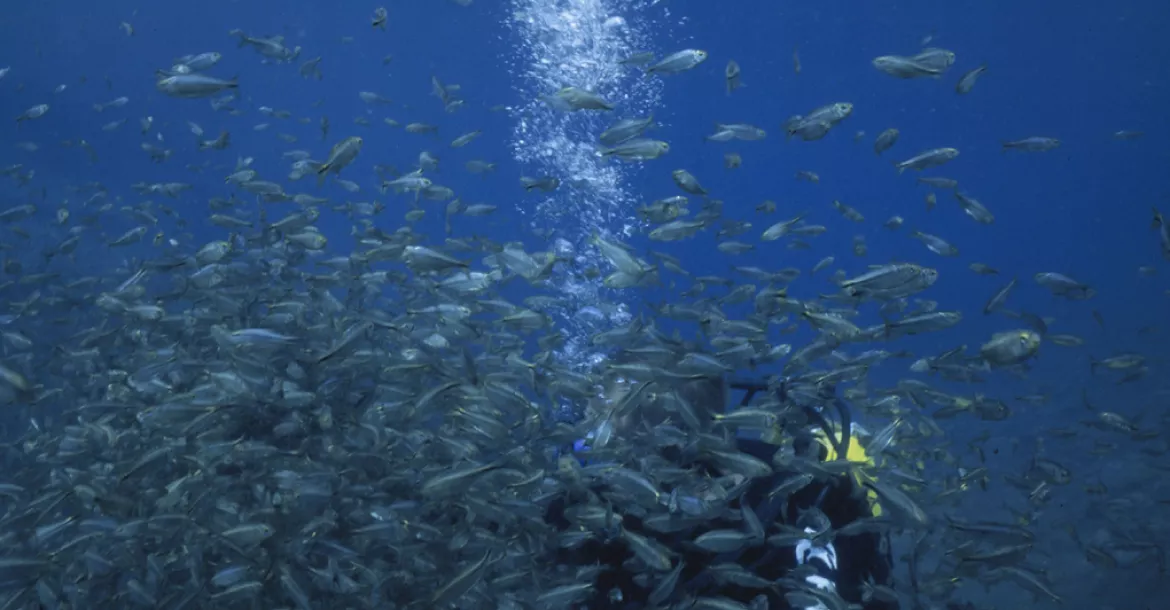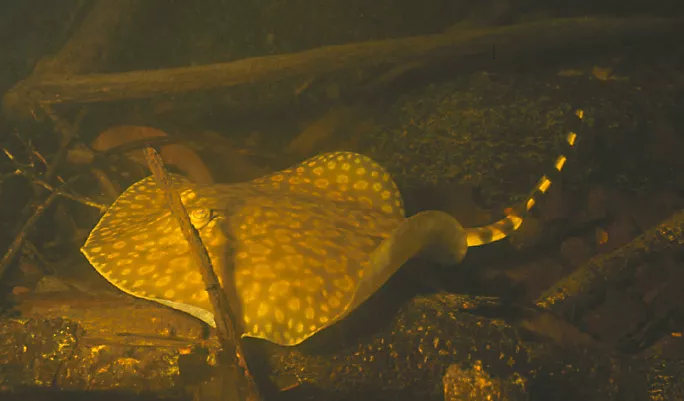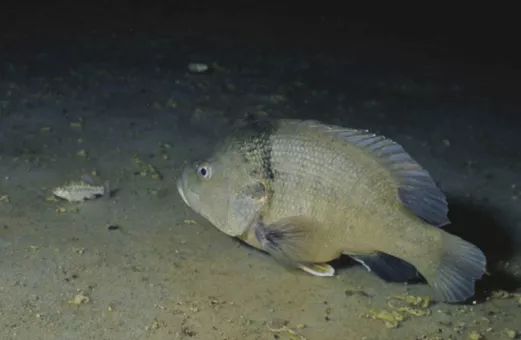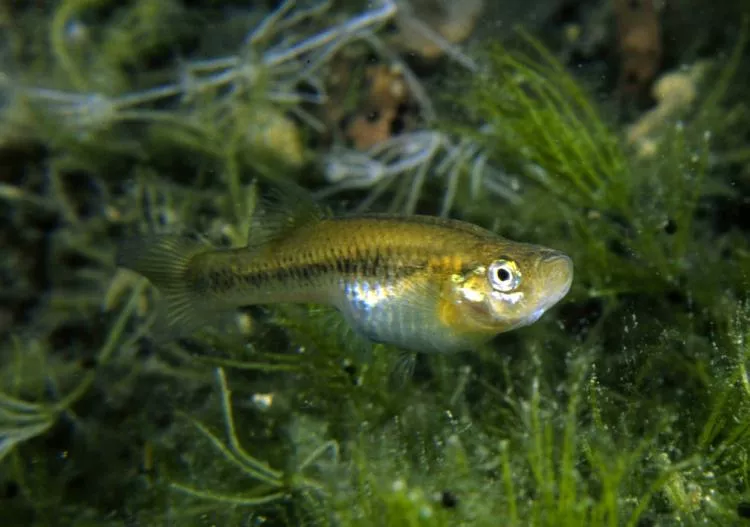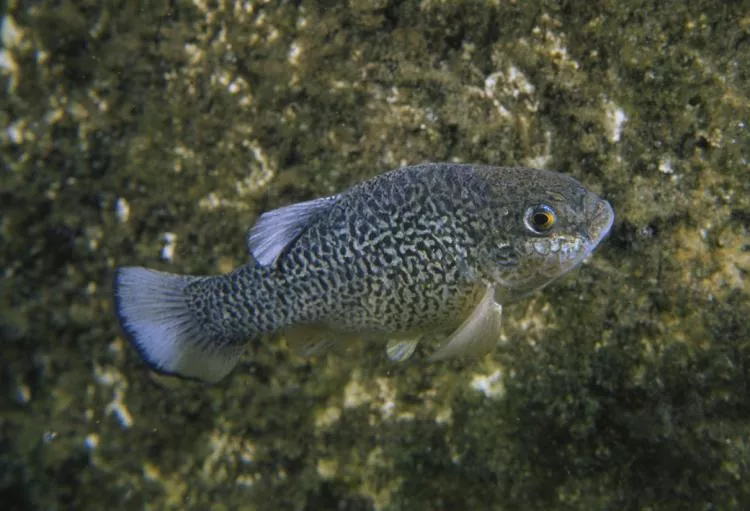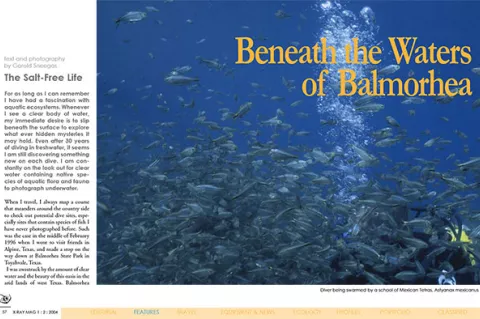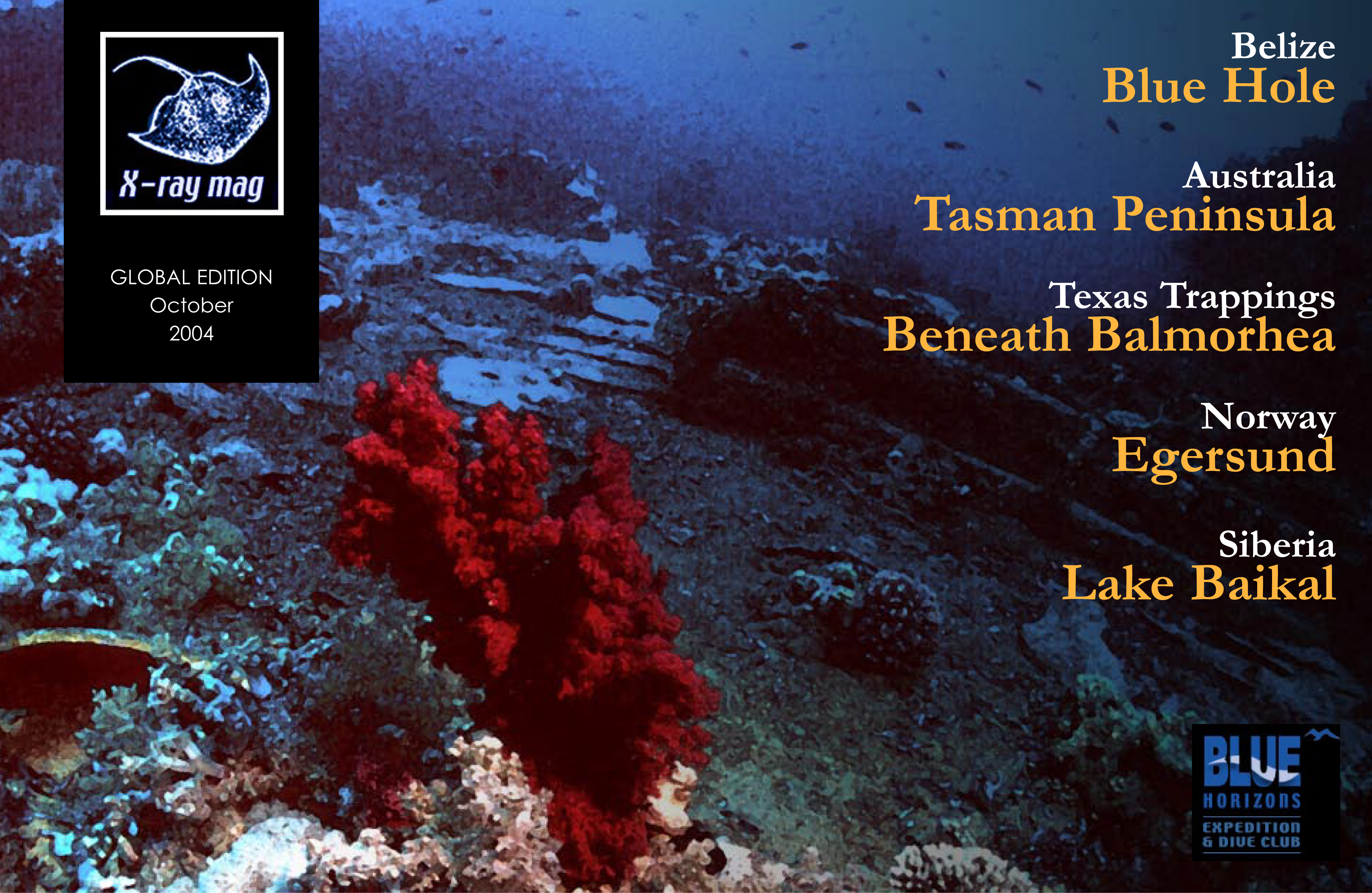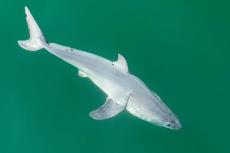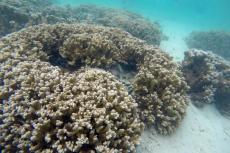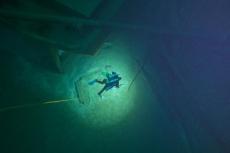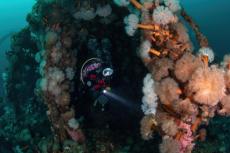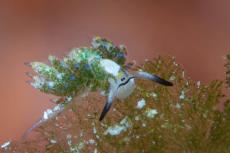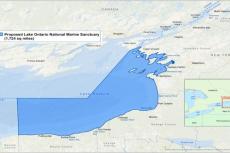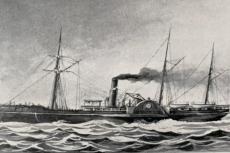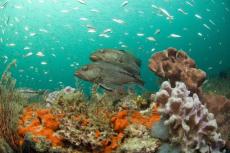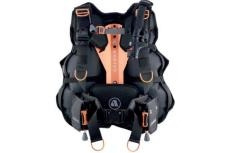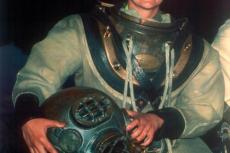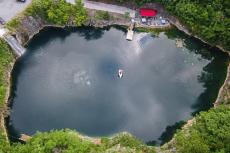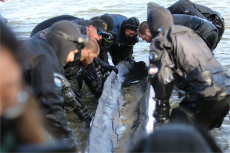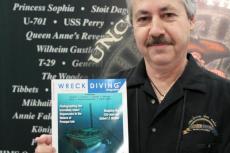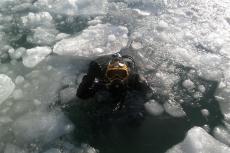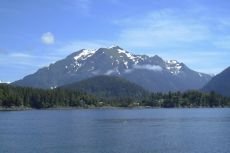For as long as I can remember I have had a fascination with aquatic ecosystems. Whenever I see a clear body of water, my immediate desire is to slip beneath the surface to explore what ever hidden mysteries it may hold. Even after 30 years of diving in freshwater, it seems I am still discovering something new on each dive. I am constantly on the look out for clear water containing native species of aquatic flora and fauna to photograph underwater.
Contributed by
When I travel, I always map a course that meanders around the country side to check out potential dive sites, especially sites that contain species of fish I have never photographed before. Such was the case in the middle of February 1996 when I went to visit friends in Alpine, Texas, and made a stop on the way down at Balmorhea State Park in Toyahvale, Texas.
I was awestruck by the amount of clear water and the beauty of this oasis in the arid lands of west Texas. Balmorhea State Park and its refugium were constructed in 1975 to provide habitat for two endangered species, the Commanche Springs Pupfish, Cyprinodon elegans, and the Pecos Gambusia, Gambusia nobilis.
Clear Pool
The swimming pool is one of the largest man-made pools in the United States, fed by 22-26 million gallons (84-99 million liters) of clear, 76° F water from San Solomon Springs. The pool has a large main circular area 25 feet (8m) deep with two long rectangular arms extending out. One arm is three to five feet (1-2m) deep, the other is twenty feet (8m) deep. The circular pool is reserved for scuba divers while the two arms are open to swimmers and snorkelers.
Water from the pool flows into a series of canals constructed around the park. Recently water has been diverted into a newly constructed cienega, or wetlands area. After the water flows through the park, it is available for agriculture use in the surrounding area. The canals and cienega provide additional safe habitat for the two endangered species The canals are off limits to swimming, however both species of fish can easily be observed from the bank.
What drew me to the park was the opportunity to photograph the Commanche Springs Pupfish underwater in the swimming area. Photographing fish underwater is not an easy task as anyone who has ever attempted it will tell you. There is no way you can sneak up on or chase a fish in its own element. Your subject has to realize you are not a threat and be willing to swim up to you or at the very least ignore you as he or she goes about their daily business. The best way I can describe how to do this is to move slowly... do not make any sudden moves and basically act like you are nothing more than a floating log.
My first attempts at photographing the Commanche Springs Pupfish during the day were not successful. The pupfish were very active and wary, worst yet were the schools of Mexican Tetras that were swarming around me. Whenever I would attempt to get close to the pupfish, the schools of tetras around me would spook the pupfish. The park is a very popular scuba diving site on weekends and divers often feed the tetras. The tetras have become so accustomed to being fed that anytime a diver enters the water they swarm in around them.
Pupfish at Night
I have learned from past experience that a number of fish species that are active during the day are completely dormant at night and are easy to approach. I decided to try my luck at photographing the pupfish at night.
I noticed that during the day there were only tetras and pupfish present in the shallow three foot (1m) arm of the swimming area. I decided to enter this arm just after dusk. As I suspected, the tetras were inactive near the surface and the pupfish where spread all over the bottom completely inactive and easily approachable. What I did not expect to see was the feeding frenzy of predators on the pupfish. A number of Green sunfish and Headwater catfish had moved into the shallow arm and were scouring the bottom feeding on the immobile pupfish.
Turtles
In addition to the fishes at the head of the arm, four Texas Spiny Softshell turtles were lined up in a straight line moving up the arm. They reminded me of a line of infantry moving into battle. This may seem like a terrible fate to befall an endangered species, however keep in mind that pupfish are prolific breeders and spawn virtually year round. They can rapidly over populate their environment without some type of predator control.
Due to time restraints, I was only able to shoot a few rolls of film before having to move on. I was not able to see the results of my efforts until I returned home a few days later. Unfortunately, I had made some exposure errors and was not pleased with the few images I ended up with. The memories of what I had witnessed on the night dive kept haunting me for weeks. I finally decided to return to Balmorhea in mid-April and spend three days concentrating on just photography.
My second efforts resulted in a vast improvement over the first trip. I was also fortunate to have park ranger, Tom Johnson, assist me on a few dives. Even though Tom was very busy during the day, he still found time after work to help out on a couple of dives.
I mentioned earlier that my first attempt at photographing pupfish during the day was hindered by the swarms of tetras around me. After several dives during my second visit, the tetras began to realize I did not have anything to offer them and began to ignore me. I was then able to slowly allow the pupfish to become accustomed to my presence until they knew I was not a threat to them. This allowed me to closely observe some interesting behavior.
Male pupfish set up territories and vehemently guard them from intrusion by other males or even from larger tetras. Without making several dives and patiently waiting for the pupfish to become accustomed to my presence, it would have been impossible to observe this behavior. This is very similar to the difference between taking a casual walk down a nature trail in the middle of the day and quietly setting in a blind at the break of dawn.
Every wildlife photographer, outdoors man, deer or turkey hunter knows you will see a lot more wildlife by remaining still and blending in with the environment. The same is true when you are trying to view aquatic life. You just have to adjust your techniques to fit the environment you are in. The real key to successful viewing and photographing aquatic life is to know what you are looking at, being patient and learning to look closely at small details.
Deep Drama
There are numerous interactions between aquatic organisms being played out beneath the surface of the swimming area of Balmorhea State Park. Too often, divers do not pay attention to the smaller subtle dramas that are continually going on in front of them. Dramatic interactions are constantly taking place and no two dives will ever be the same if you learn to pay attention. In addition to the spawning and feeding habits of all species of fish, the behaviors of turtles, crayfish, snails and insect life cycles are all fascinating subjects to explore.
I often have trouble convincing people the photographs I show them were taken in freshwater. There is a false notion that the only place to view the wonders of the underwater world is scuba diving on a tropical reef. Opportunities to observe and photograph aquatic life are only limited to your ability to learn how to adjust your own view point and techniques to fit the environment your exploring. At the swimming area of Balmorhea State Park, you do not have to be a scuba diver to view an endangered species interacting with other co-inhabitants. All you really need is a mask and snorkel and a little patience to open up a new world that is only a couple of feet below the surface.
Published in
-
X-Ray Mag #1
- Read more about X-Ray Mag #1
- Log in to post comments

